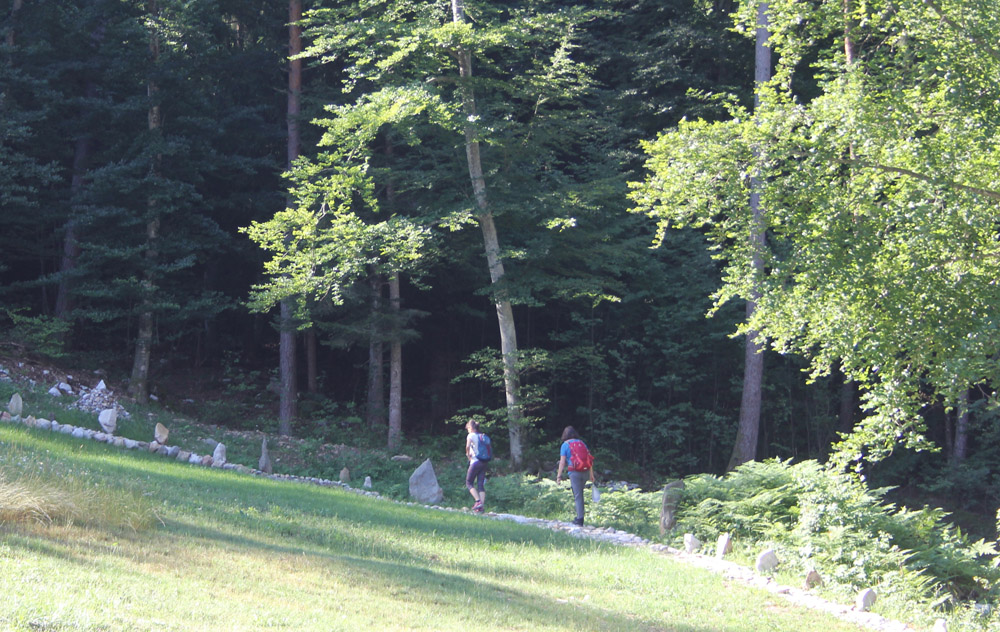The creation of the circular path
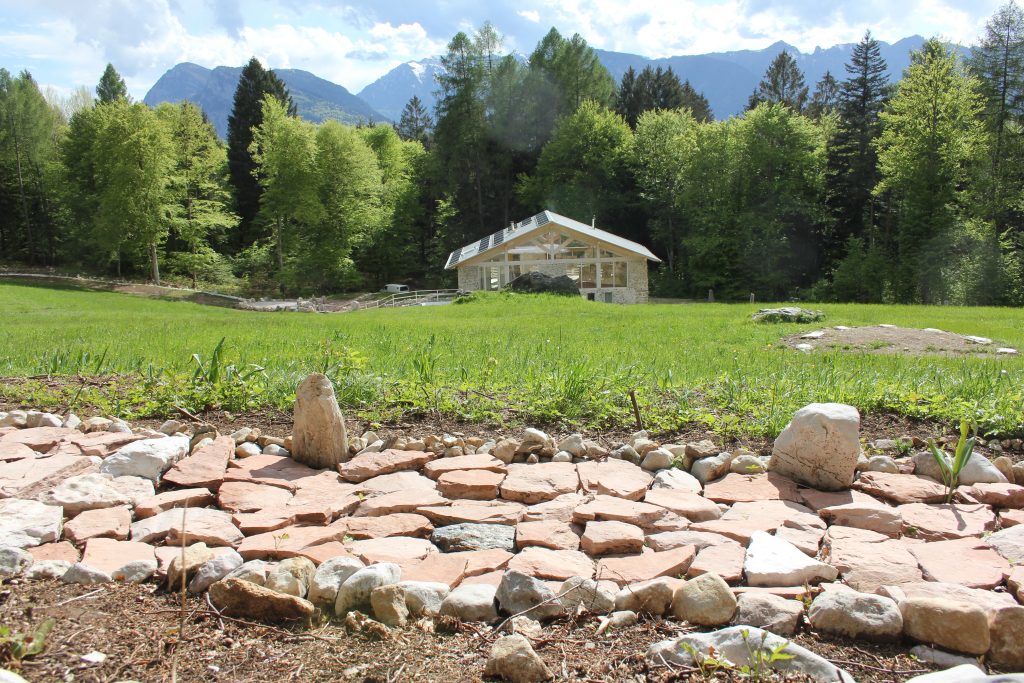
The circular stone path leads around the edge of the property. On the one hand it is a path, on the other hand it gives the property a hold, a border or an outer frame.
It is built with mostly limestone, which when cleaned, shines in a very bright white tone. The stone gives the earthy forest edge a dry, clear character.
When the light shines on the clean limestone, it reflects the light. The border of the property “glows” white on sunny days and contrasts with the dark edge of the forest.
The path was built in very different ways depending on the area. In parts, individual stones were set into the earth, in other parts the path is one metre wide and composed of larger and smaller stones.




The path was built in very different ways depending on the area. In some areas, individual stones were set into the ground, in others areas the path is one metre wide and composed of larger and smaller stones.
The stones come from place and were given new meaning in the path. Each stone was selected, found and placed for a specific place. The stones are ordered and filled with new meaning, they fit into a whole and create a form.
The stones placed next to the path create a rhythm on the one hand and emphasise the verticality in contrast to the flat path on the other.
When the path was built, care was taken to ensure that it runs less linearly and more in harmonious curves. The curves stimulate the senses, you can literally glide along them with your eyes.


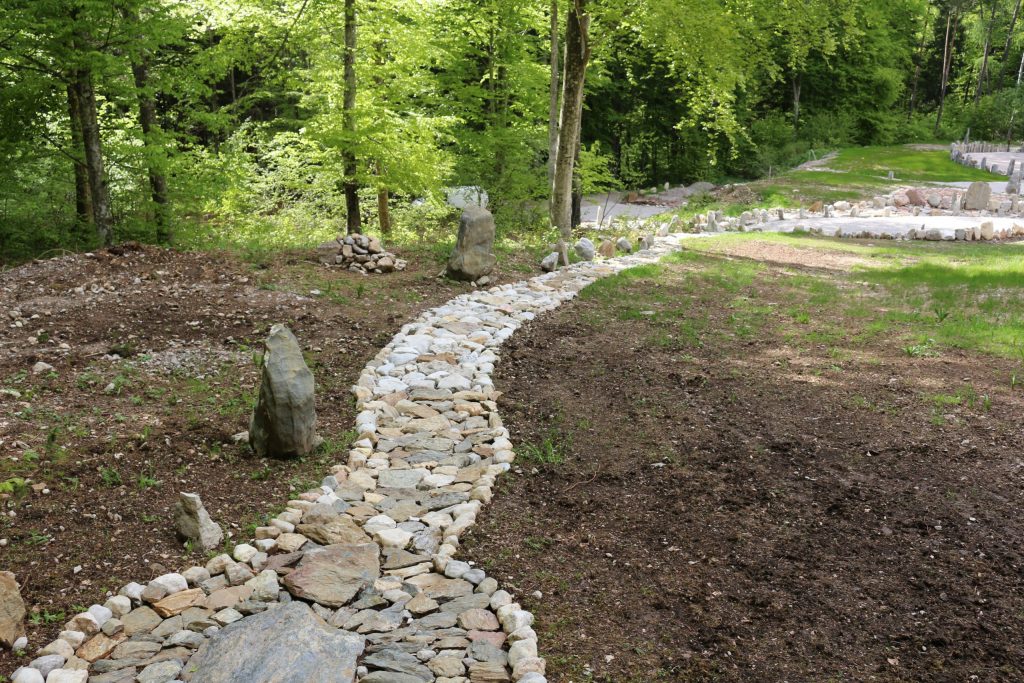

Red and white lime alternate in the path. They have a different effect.


Small squares built into the path or a stone bench at the side of the path give the path variety. The “flow” of the path is given collection, calm and structure by a square.
The path border is laid with a row of stones at the edge. It gives the path support and ensures a regular shape. When building the path, we first laid the edge row of the path to create a clear line.

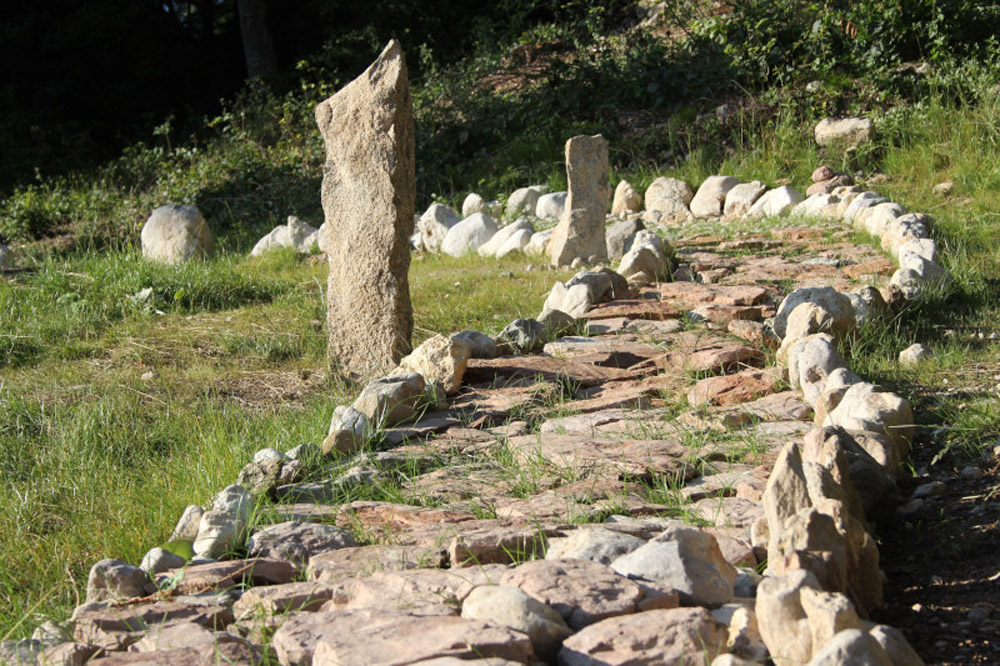
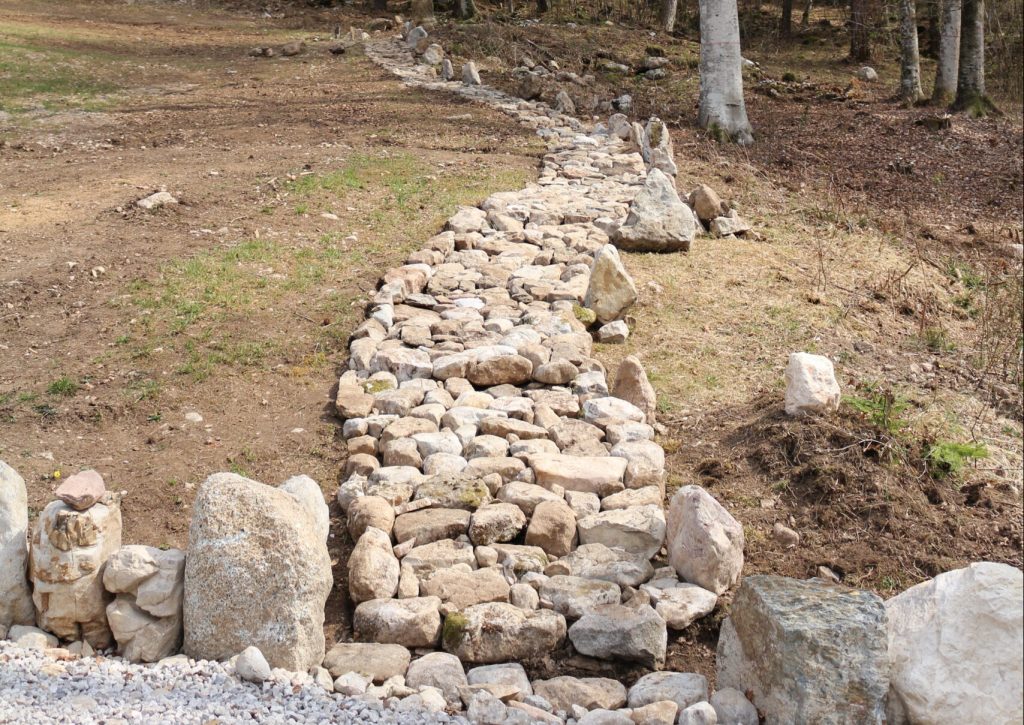


From the path, many different perspectives and viewpoints open up to you.
By walking around the property once on the path, one experiences oneself at the edge and looks again and again at the house. The house appears again and again as the centre, the path as a circle around it. If you walk along the path once, you have the sensation of circling a centre completely.
